Synone
Houses within 10km of this house
Displaying 52 houses.
Houses within 10km of Synone
Displaying 52 houses.
| House name | Description | |
|---|---|---|
| Noan | Originally the home of the Taylor family, Wilson refers to Noan as the seat of Godrey Taylor in 1786. It was occupied by Natt. Taylor in 1814 and recorded by Lewis as the seat of the Taylor family. In 1840 the Ordnance Survey Name Books refer to Mary Phelps as the proprietor of Noan House. By the mid 19th century it was occupied by the representatives of John Bagwell and held in fee. The buildings were valued at almost £30. The sale rental of 1853 records James Chadwick as tenant on a seven year lease. A lithograph of the house is included. Occupied by Dr Armitage in the 1870s who owned over 2,000 acres in the county. It is still extant and occupied. |
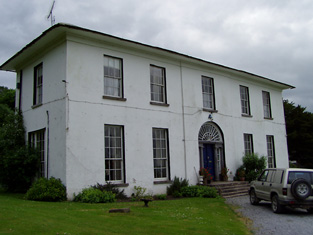
|
| Silverfort | Silverfort was the home of a branch of the Scully family throughout the 19th century. Jeremiah Scully was resident in 1814, in 1837 and in the early 1850s when he held the house valued at £18.10 shillings from George Carlton. Jerome J. Scully was tenant in November 1857 and still resident in the mid 1870s. This house is still in use as a country home. |
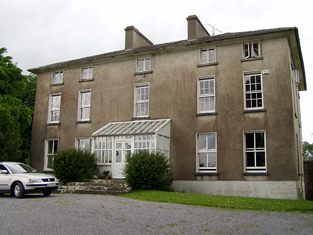
|
| Ardmayle/Clonmore | Ardmayle House in the townland of Clonmore North is marked on the first Ordnance Survey map. The Prices were resident here from at least the 1770s ad Wilson mentions it as the seat of Mr. Price in the 1780s. "Ardmoyle", Cashel, was the residence of Thomas Price in 1814 and in 1837. Richard Price was the occupant in 1850 holding the house valued at £21.17 shillings from John Hyde. The National Inventory of Architectural Heritage states that the present house dates from circa 1870s and was formerly the wing of an 18th century house demolished in 1951. Louis H. Grubb occupied at house at Clonmore North in 1906 valued at £56. This house is now known as Clonmore. |
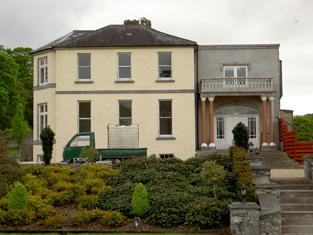
|
| Fort Edward | Fort Edward was the home of Edward Long from at least the mid 1830s and is referred to as his residence by the Ordnance Survey Name Books in 1840. At the time of Griffith's Valuation he held the property from Charles Bianconi and the buildings were valued at £19+. Still extant and occupied. |
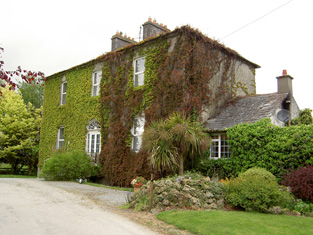
|
| Longfield | The seat of the Long family, occupied by Richard Long in 1814 and in 1837. Bought by Charles Bianconi in the 1840s, he held it in fee in the early 1850s when the house was valued at £27+. By 1906 the house was valued at £37 and was occupied by Mary Anne O'Connell. The house remained in the ownership of Bianconi's descendants until 1968 when it was bequeathed by Mrs Mary O'Connell Bianconi to the Irish Georgian Society. |

|
| Ballinree | Ballinree House was valued at £16+ in 1850 and was occupied by the Reverend William Kirwan and held from Smyth Barry. Arthur H.S. Barry was the occupier in 1906. | |
| Ballysheehan | Occupied by the Lethams from at least the 1770s and noted by Wilson as their residence in 1786. William Latham is recorded as resident in 1814 and Thomas Brinly in 1850 when the buildings were valued at £28+ and held from Smyth Barry. This house still exists, the centre of a stud. | |
| Ballytarsna | John Max occupied this house which he held from the Bunbury estate in 1850. The buildings were valued at £16.12 shillings. In 1906 James Grene was resident. Recently renovated this house is still well maintained and occupied. |
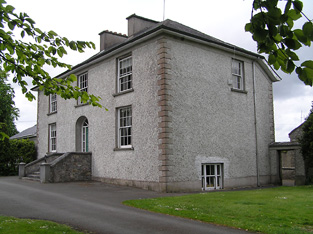
|
| Dually | William Scully, fourth son of Roger Scully of Kilfeacle and Dualla, county Tipperary, was living at Dually in the late 18th century. John Scully was resident at Dually in 1837. In 1811 John had married Catherine Moore sister of the poet Thomas Moore. Roger Scully was the occupier in the early 1850s. He held the property from Oliver Latham and the buildings were valued at £24.14 shillings. This house is now run as a Bed and Breakfast guesthouse by the Power family. http://www.duallahouse.com/ |
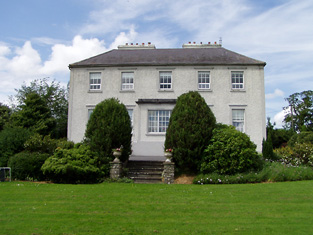
|
| New Park | A mid 18th century house built by the Pennefather family and occupied by them until sold to the Davies family after the Famine (Bence Jones). In the mid 19th century the house was valued at almost £49 and held in fee by Captain M. Pennefather. It was advertised for sale by the Pennefathers in June 1852 and bought by the Davies who sold it to the McCans in 1864. Joseph McCann was resident in 1906. Now known as Ballyowen House and still in use as a country house. |
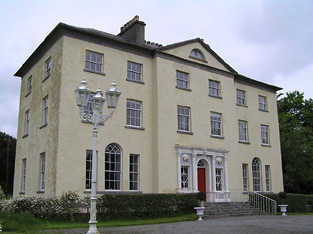
|
| Rathclogh Cottage | A small residence when marked on the first Ordnance Survey map. Occupied by Charles Minchin in 1850, valued at £13+ and held from John Millett. | |
| Mayfield House | A Price home, occupied by Thomas Price in the mid 19th century and held from William Price, it was valued at £14+. Still extant and occupied. |

|
| Coleraine | The seat of the Price family occupied by William Price in the mid 19th century and held by him in fee. The buildings were valued at £31.15 shillings. Thomas Price was resident in 1906. This house is still extant and occupied. | |
| Meldrum | The Sall family were located at Meldrum in the early 17th century and through marriage the property passed to the Latham family who were resident in the 1780s. . A mainly 18th century house built onto part of a 17th century house Meldrum was a Lloyd residence in the 19th century. It was the home of Richard Lloyd in 1814 and of the Reverend Richard Lloyd in 1837 and at the time of Griffith's Valuation, when it was valued at £26+ and held from Oliver Latham. The Lethams were resident in the 1770s. In 1894 Slater notes it as the seat of David Tennant. A house and large farm now occupy the site. |
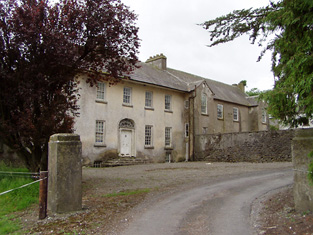
|
| Gaile | Gaile was the home of the Phillips family in the 19th century, occupied by S. Phillips in 1837 and by Richard Phillips in 1850. It was held from Benjamin Bunbury with 749 acres and was valued at £37+. The Phillips continued to reside at Gaile until at least the mid 20th century. This house was vacant in the early 21st century. |
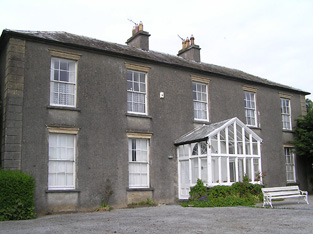
|
| Regaile | In 1840 the Ordnance Survey Name Books record Rev. Mr. Joice as the occupant of Regeale. The Reverend Robert Armstrong occupied the house at the time of Griffith's Valuation holding it from Richard Phillips. The buildings were valued at £20.18 shillings.A house is still extant at Regaile. | |
| Grallagh Castle | In 1840 the Ordnance Survey Name Books refer to Mr. Hodgins as resident at Grallagh House. Southery Mansergh occupied the house,valued at £14+ in the mid 19th century. He held this property from O'Connor Hinchy. It is labelled Grallagh House on the 1st Edition Ordnance Survey map but as Grallagh Castle on the 25-inch map of the 1890s. It is no longer extant. | |
| Graiguenoe | In 1837 Lewis refers to C. Clarke "who has recently erected a spacious and elegant mansion on his estate". In 1850 this mansion was valued at £44.12 shillings and it was held in fee by Charles Clarke. Slater noted it as the seat of James Neville Clarke in 1894 and the Clarkes were still resident at Granguenoe Park in the early 20th century. The house was burnt in 1923. The site is now occupied by a stud farm. | |
| Killough | A 16th century tower house with a number of additions, Lewis records Killough Castle as the "occasional residence" of the Honourable Mrs Plunkett. In 1850 the Honourable Bowes Daly occupied the castle valued at £22.14 shillings which he held in fee. |
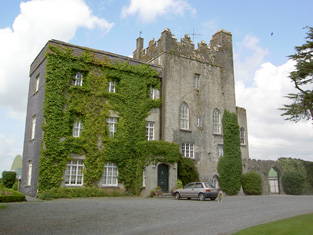
|
| Ballinamona | Ballinamona was the home of the Murphy family in the 19th century, occupied by William Murphy in 1814 and in 1850. The buildings were valued at £21.15 shillings and held in fee. Edmund William Murphy was resident in 1906. |

|
| Deerpark | This house valued at £34.12 shillings was occupied by John Hare and held from the representatives of - Wyse in the mid 19th century. The National Inventory of Architectural Heritage survey indicates it was built around 1850. It is still extant. |
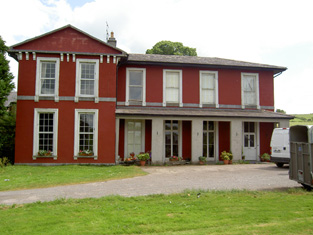
|
| Beechmount | John Godfrey was the occupant of Beechmount, Fethard, in 1814 but by 1837 T. G. [Thomas Godfrey] Phillips was resident. He held the property from the Massys and in the early 1850s the buildings were valued at £18.12 shillings. The representatives of Samuel Phillips were still resident here in the 1870s. The house is still a residence. |
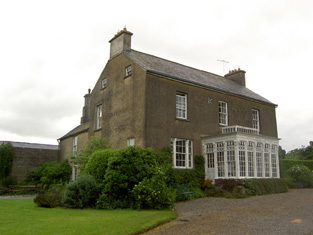
|
| Castlelake Cottage | Major M. Lidwell was resident at Castlelake, Cashel, in 1814. In 1837 Lewis records a distillery and the neat residence of Thomas Mathew. The Ordnance Survey Name Books refer to it as being occupied by Mathew Gilbert in 1840. These buildings appear to be in the possession of the Poor Law Commissioners at the time of Griffith's Valuation, valued at £40+ and held from General Hall. The buildings no longer exist. [In 1786 Wilson may be referring to this property when he note a seat of Mr. Burke at Castlelake]. | |
| Rock View | Rock View, Cashel, was occupied by John Lane in 1814, by Sam Cooper in 1837 and by Mrs Margaret Matthews in the early 1850s. The buildings were valued at £18.16 shillings and held from General Hall. This house, located close to the road between Golden and Cashel, is still occupied. |
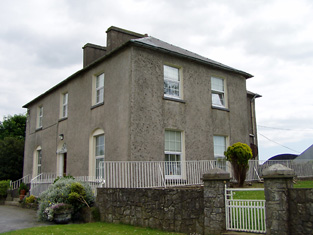
|
| Racecourse Hall | Lewis records Avary Jordan as the proprietor of Race-Course Lodge in 1837. The house was valued at £35 in the mid 19th century, occupied by Avary Jordan and held from the Cashel Commissioners. Mrs Jordan of Racecourse owned 3 acres in the 1870s. This house, located just south of the town of Cashel, still survives as a fine country residence. |
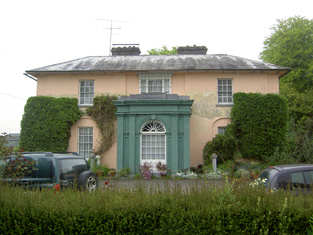
|
| Ballygriffen | Taylor and Skinner record the Earl of Clanwilliam as proprietor of Ballygrifffin, Golden, in the 1770s. In 1786 Wilson refers to two properties owned by the Earl in this area "on the left of Golden is Lisheen, a seat sometimes occupied by the Earl of Clanwiliam, contiguous to which is Ballygrifin, where his lordship has a very fine range of stables and other offices". The house now at Ballygriffin is a mid 19th century house incorporating the remains of a a tower house. Occupied by Edmond [Edward] Dalton in the mid 19th century when the buildings were valued at £16.10 shillings and held from Charles Bianconi. Edward Dalton's son John Edward Dalton of Golden Hills owned 161 acres in the 1870s. |

|
| Ballynahinch | A house valued at £14, occupied by Denis Heany and held from Richard B. H. Lowe at the time of Griffith's Valuation. This house is still extant and the centre of a working farm. |

|
| Lisheen | In 1786 Wilson writes that Lisheen was a seat sometimes occupied by the Earl of Clanwiliam. It became the seat of the Fitzgeralds, Baronets, in the 19th century, valued at £33 in the 1850s and held from the Earl of Portarlington. Edward Dalton was the tenant at the time of the sale of the Earl of Portarlington's estates in June 1856. A building is still located at this site. | |
| Clonbonane | Edmund Scully of the Silverfort branch of the Scully family lived here in the first half of the 19th century. By the time of Griffith's Valuation Jeremiah Scully held the house valued at £12 from the Earl of Norbury. This house no longer exists. | |
| Killenure Castle | Leet records Samuel Cooper as the proprietor of Killenure in 1814 and Lewis in 1837 as the "seat of William Cooper". At the time of Griffith's Valuation William Cooper held the property in fee and the house was valued at £31.10 shillings. The Coopers were still resident at Killenure in the early 20th century. As its webiste suggests "It has been a fortified home with sturdy towers, a'hunting box', a country house for a large family, a busy productive farm with stables and coach house, a boarding school and even a meditation centre". It will be open to the public from Summer 2012. See htp://killenure.com. |
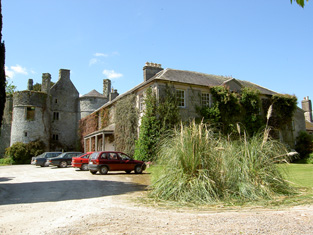
|
| Ballywalter | F. V. Wayland was resident at Ballywalter in 1837. Francis Wayland of Ballywalter was murdered in 1838 on his way to a fair. William Weyland was living at Ballywalter in the mid 19th century, when the house was held from William Cooper and valued at £12.5 shillings. The Waylands and Coopers were related. This 18th century house is still in use as a family residence. |
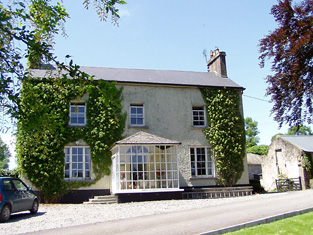
|
| Marlow | An early 18th century house, the seat of a branch of the Pennefather family, with some early 20th century additions. Still extant, this house was the residence of Thomas Pennefather in 1814 and Edward Pennefather in the mid 19th century. He held the property in fee and the buildings were valued at £14. The Pennefathers were still resident at Marlow in the mid 20th century. |

|
| Grene Park | This house dates from the mid 19th century and appears to have been built [for Nicholas B. Grene] post the first edition Ordnance survey map as it is not located on exactly the same site as the previous building. Griffith's Valuation records Nicholas B. Greene occupying a house valued at £29.15 shillings, held from the representatives of Robert Usher. This house still functions as a residence. |

|
| Ballymore House | The Murphys were established at Ballymore from the early 18th century. A castle and two houses are located in this townland at the time of Griffith's Valuation, all inhabited by members of the Murphy family. The main residence was Ballymore House, which was occupied by Edmond W. Murphy. He held the house and 423 acres from the Earl of Norbury. The buildings were valued at £24.5 shillings. Daniel Murphy also occupied a house valued at £12.5 shillings (Grid Ref S021 457). Ballymore House is still a family residence. |
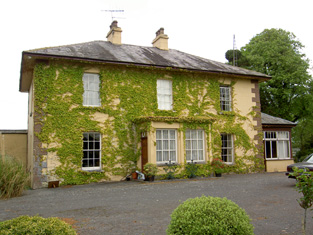
|
| Woodford | John Murphy lived at Woodford in 1814 and Edmund Murphy in the mid 19th century when the house was valued at £30.15 shillings and held from Francis Greene. The Ordnance Survey Name Books describe it as "a gentleman's seat situated in a small demesne" in 1841. It is still extant. |

|
| Cappamurragh | The Grene family home occupied by John Grene in the first half of the 19th century. He held the property in fee and the buildings were valued at £24 in the early 1850s. In 1841 the Ordnance Survey Name Books describe it as "a gentleman's seat in a very handsome demesne of considerable extent". It is still extant. |

|
| Moyaliff | Mealiffe was the residence of the Reverend William Armstrong in 1837 (the Chancellor) and of John Armstrong in the early 1850s. John Armstrong held the property from Colonel Pennefather and the buildings were valued at £29.10 shillings. Moyaliff was the residence of Edward Marcus Armstrong in the 1880s. Mark Armstrong occupied this house in 1906. This house, which incorporates building from the 18th and 19th century, is still a residence. |

|
| Heathview | This house is marked on the first edition Ordnance Survey map as Liskeveen House. Luke Bray was the proprietor of Liskeveen in 1814. A vacant house valued at £14.18 shillings was in the possession of Samuel M. Going at the time of Griffith's Valuation. A new house located slightly to the south of the original house was built circa mid 19th century. This is the house known as Heathview occupied by Samuel M. Going's daughter Margaret and her husband Owen Lloyd Mansergh in the late 19th century. | |
| Parkstown | The Lamphiers were resident at Parkstown from at least the 1770s. In 1786 Wilson refers to Parkes-town as the seat of "Mr. Lanphier". Henry Langley lived at Parkstown in 1814 and John P. Lamphier was resident in 1837 and in the early 1850s. Lamphier held the property from the Court of Chancery and the buildings were valued at £23+. John P. Lanphier was the occupant at the time of sale in 1852. This building is still a fine residence. |
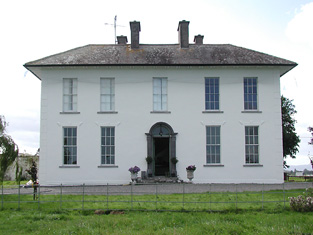
|
| Cabragh Castle | The home of James Fogarty in 1814. In 1840 the Ordnance Survey Name Books refer to P. Fogarty as the proprietor of "Cabra House". Denis Leahy was the occupier in the mid 19th century when the castle was valued at £16+ and held from the Court of Chancery. | |
| Raheen Park | Located south east of Farneybridge this house was occupied by Edward Wilson in the mid 19th century, valued at £34 and held from William B. Armstrong. Raheen Park may have been previously known as Brasfort. Brasfort was the home of the Wilsons in the 1830s. Edward Wilson was Chief Magistrate of Police in county Tipperary in the 1820s. In 1820, his son, Edward Wilson, married Isabella, daughter of Thomas Goodricke Peacock of Fort Etna and they had a son, Thomas Goodricke Wilson, who married Mary Studdert in 1861 and emigrated to Canada. In 1840 the Ordnance Survey Name Books refer to E. Wilson as the proprietor of Raheen Park. Edward Wilson of Raheen Park died at Monkstown, county Dublin in 1880, aged 81, (see D.23260 in the National Archives). | |
| Maxfort House | Maxfort was the home of John Max in 1814 and of William Max in 1837 and at the time of Griffith's Valuation. It was held from Viscount Hawarden and valued at £15.18 shillings. A house is still extant at the site. | |
| Laurel Lodge | In the mid 19th century Vernon Lamphiere occupied a house in the townland of Moycarky held from William Max and valued at £13.5 shillings. A house is still extant at the site. | |
| Brittas House | Built in the late 19th century by James O'Heney/Heney of Cashel and valued at £25 in 1906. Brittas House is now a stud farm belonging to Peter Magnier. | |
| Camus | A house occupied by James Chadwick and held from the representatives of Eustin [Austin] Cooper at the time of Griffith's Valuation. The buildings were valued at £28.18 shillings. |
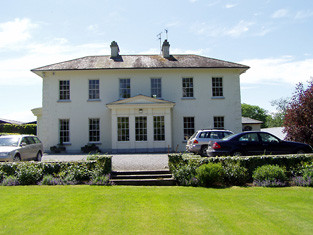
|
| Beakstown House | Major Ledwell was resident at Beakstown in 1837 and the Ordnance Survey Name Books also mention it as his residence in 1840. At the time of Griffith's Valuation one house at Beakstown appears to be in use as an auxiliary poorhouse, held by the Reverend George Peacock from the Court of Chancery and valued at £22+. Another property seems to be labelled Abbey View on the 1st Edition Ordnance Survey map but as Beakstown Cottage on the 25-inch map of the 1890s. The OS Name Books refer to this house as the residence of Mr. Mullvany, proprietor of Beakstown Flour Mills nearby. The name Beakstown Cottage had previously belonged to another property in Beakstown which is still extant [S087559]. The original Beakstown House does not appear to be extant. | |
| Ballyfowloo House | At the time of Griffith's Valuation, James Heaney was leasing a holding of 130 acres from Lord Stanley's estate at Ballyfowloo. The 25-inch Ordnance Survey map of the later 19th century shows a house in this area labelled Ballyfowloo House. | |
| Shanbally House (Moycarkey) | In 1786 Wilson refers to Shanbally as the seat of Colonel Slaughter. In1840 the Ordnance Survey Name Books note that "Shanbally Old Castle" was the name given to a house in the parish of Moycarkey. By the time of Griffith's Valuation the townland is part of the estate of Miss Emma Stannix. A house is still extant at this site, now part of a large farm. | |
| Mount Judkin House | In 1786 Wilson refers to the seat of Mr. Judkin, located half a mile byond Cashel on the right. At the time of Griffith's Valuation, the townland was leased by Richard Jordan to Edmund Cusack and the house was valued at almost £8. Buildings are still extant at the site. | |
| Holycross House | In 1840 the Ordnance Survey Name Books refer to Holycross House as a gentleman's residence. At the time of Griffith's Valuation, it was owned by Rev. Garret Wall but was unoccupied. The house was valued at almost £24. A house still stands at this site which now appears to be in use as a presbytery. |
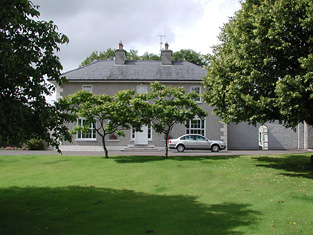
|
| Abbeyfield / Gortnagowth | In 1840 the Ordnance Survey Name Books refer to Abbeyfield House as the residence of William Jones. At the time of Griffith's Valuation, Jeremiah O'Brien was leasing this property from the Wall estate when it was valued at £15+ and included a mill. It is labelled Abbeyfield on the 1st edition Ordnance Survey map but as Gortnagowth on the 25-inch map of the 1890s. It is still extant. | |
| Whitefort House | The Ordnance Survey Name Books refer to Whitefort House as a gentleman's residence in 1840. At the time of Griffith's Valuation, this property was leased by John Jones from the Wall estate when it was valued at almost £10. It is still extant. |

